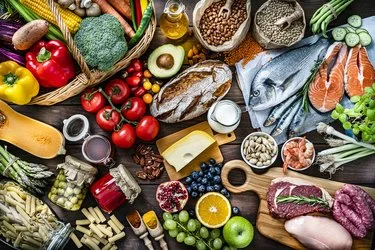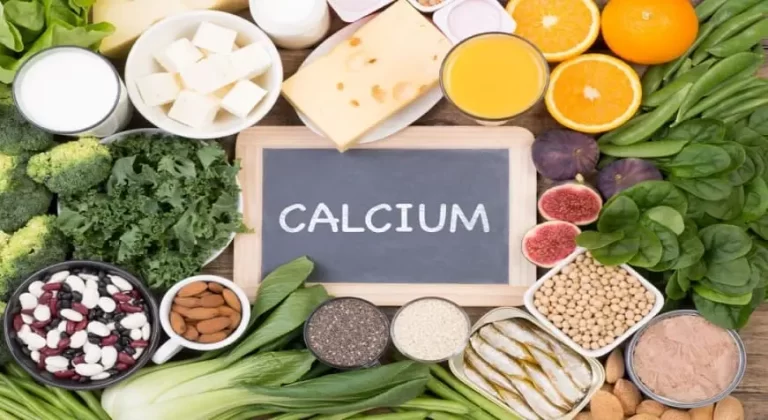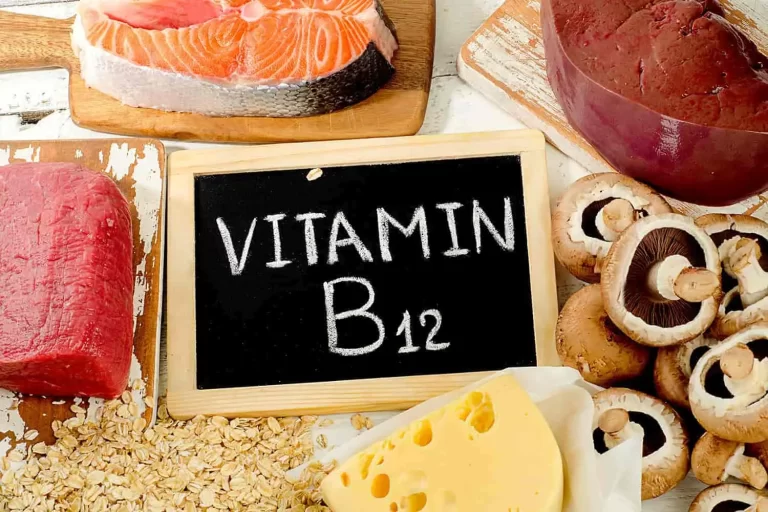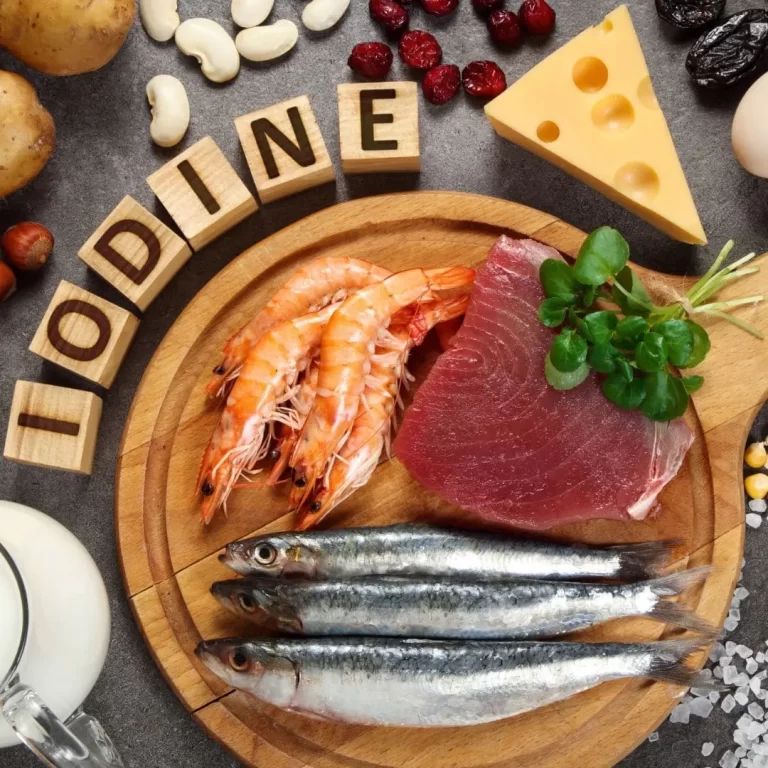Dietary Fiber
What is a Dietary Fiber?
Roughage, or dietary fiber is the part of food originating from plants that human digestive enzymes are unable to fully break down.
The chemical makeup of dietary fibers varies, but they can be broadly categorized based on factors like solubility, viscosity, and fermentability that influence the body’s processing of the fibers.
Soluble fiber and insoluble fiber, which are found in plant-based foods like legumes, whole grains and cereals, vegetables, fruits, nuts, and seeds, make up the two main types of dietary fiber.
A nutritional plan Regularly consuming large amounts of fiber is generally linked to improving health and reducing the risk of many diseases.
Dietary fiber is made up of non-starch polysaccharides as well as other plant materials such as chitins (found in fungus), pectins, cellulose, resistant starch, resistant dextrins, inulin, lignins, and oligosaccharides.
Dietary fiber sources have historically been classified as either soluble or insoluble fiber-containing foods. Based on the fiber’s viscosity and fermentability, plant foods contain different amounts of both kinds of fiber.
The benefits of eating fiber vary depending on the kind of fiber taken and the potential effects on the gastrointestinal tract. Fibers in bulk, such as cellulose and Hemicelluloses, which include psyllium, absorb and retain water to help maintain regular bowel movements.
Beta-glucan and psyllium are examples of viscous fibers that thicken the fecal material. The bacteria and microbiota of the large intestine are fed by fermentable fibers, such as resistant starch, xanthan gum, and inulin.
These fibers are then broken down to produce short-chain fatty acids, which play a variety of functions in gastrointestinal health.
In general, soluble fiber (also known as fermentable fiber or prebiotic fiber) that dissolves in water ferments in the colon to produce gasses and physiologically active byproducts like short-chain fatty acids that are made by gut bacteria.
Two such are raw guar gum and beta-glucans, which are found in oats, barley, and mushrooms. The soluble, Psyllium Viscous, nonfermented fiber is a bulking agent that facilitates easier stools by holding onto water while passing through the digestive tract.
Since soluble fiber often has a viscous consistency and slows down stomach emptying, it might give people a prolonged feeling of fullness.
Soluble non-viscous fibers include inulin (found in chicory root), wheat dextrin, oligosaccharides, and resistant starches (found in legumes and bananas).
Frequent consumption of soluble fibers, like beta-glucans found in barley or oats, has been shown to reduce blood levels of low-density lipoprotein (LDL), a vascular disease risk factor. Supplements containing soluble fiber also dramatically reduce LDL cholesterol.
Upper gastrointestinal tract digesting enzymes are inactive against insoluble fiber, which is a material that does not dissolve in water.
Lignin, cellulose, and wheat bran are a few examples. Bulking is achieved by insoluble fiber that has been coarsely processed because it causes the large intestine to secrete mucus.
In fact, finely powdered insoluble fiber may have the opposite effect, making constipation more likely. Resistant starches are one type of insoluble fiber that can ferment in the colon.
Definition
Plant components that are not broken down by the digestive enzymes of humans are referred to as dietary fiber.
Only lignin and a few other polysaccharides were thought to meet this criterion in the late 20th century; yet, resistant starch and oligosaccharides were added to the list of dietary fiber components in the early 21st century.
“All polysaccharides and lignin, which are not digested by the endogenous secretion of the human digestive tract” is the widely recognized definition of dietary fiber.
Nowadays, the majority of animal nutritionists define it either chemically (as “the sum of non-starch polysaccharides (NSP) and lignin”) or physiologically (as “the dietary components resistant to degradation by mammalian enzymes”).
Types and Sources
| Nutrient | Food additive | Source/Comments (water-insoluble dietary fibers) |
| β-glucans (a few of which are water-soluble) | ||
| Cellulose | E 460 | grains, fruits, and veggies (found in all plants generally) |
| Chitin | exoskeletons of insects and crustaceans in fungus | |
| Hemicellulose | grains, bran, wood, and legumes | |
| Hexoses | barley and wheat | |
| Pentose | rye and oat | |
| Lignin | stones of fruits, vegetables, grains, and garden bean filaments | |
| Xanthan gum | E 415 | synthesis from sugar substrates using the bacterium Xanthomonas |
| Resistant starch | Can be retrograded starch (type RS3), granular starch (type RS2), or starch protected by seed or shell (type RS1). | |
| Resistant starch | high-amylose potatoes, cooked and cooled pasta, raw bananas, barley, high-amylose wheat, and legumes |
| Arabinoxylan (a hemicellulose) | psyllium | |
| Fructans | In certain plant species, substitute or enhance starch as a storage carbohydrate. | |
| Inulin | in a variety of plants, such as chicory, topinambour, etc. | |
| Polyuronide | ||
| Pectin | E 440 | in the fruit (apples and quinces, in particular), vegetables |
| Alginic acids (Alginates) | E 400-E407 | in Algae |
| Sodium alginate | E 401 | |
| Sodium Alginate | E 402 | |
| Ammonium alginate | E 403 | |
| Calcium alginate | E 404 | |
| Propylene glycol alginate (PGA) | E 405 | |
| agar | E 406 | |
| carrageen | E 407 | red algae |
| Raffinose | legumes | |
| Polydextrose | E 1200 | synthetic polymer, c. 1 kcal/g |
Contents in Food
Whole grains, fruits, and vegetables are good sources of dietary fiber. The following table lists the grams of fiber that are often found in foods.
| Food group | Serving mean | Food Group |
| Fruit | 120 mL (0.5 cup) | 1.1 g |
| Dark green vegetables | 120 mL (0.5 cup) | 6.4 g |
| Orange vegetables | 120 mL (0.5 cup) | 2.1 g |
| Cooked dry beans (legumes) | 120 mL (0.5 cup) | 8.0 g |
| Starchy vegetables | 120 mL (0.5 cup) | 1.7 g |
| Other vegetables | 120 mL (0.5 cup) | 1.1 g |
| Whole grains | 28 g (1 oz) | 2.4 g |
| Meat | 28 g (1 oz) | 0.1 g |
Dietary fiber is present in plants and is generally consumed in its full form, whether raw or cooked. However, it can also be added to foods and supplements that are high in fiber.
Products made from grain bran, such as crude corn bran (79 g per 100 g) and crude wheat bran (43 g per 100 g), are used as ingredients in processed foods and have the greatest fiber concentrations.
The Standard American Diet (SAD), which consists mostly of processed and artificially sweetened foods with little to no intake of vegetables and legumes, is recommended to be supplemented with goods high in fiber by medical authorities.
Plant Sources
Some plants contain significant amounts of soluble and insoluble fiber. For example, plums and prunes have thick skin covering pulp. Grapes also contain a fair amount of fiber.
Soluble Fiber
Present in varying quantities in all plant-based foods, such as:
- legumes, including lupins, soybeans, peas, and various beans
- barley, rye, chia, and oats
- a few fruits (such as the skins of apples, quinces, pears, figs, avocados, plums, prunes, berries, and ripe bananas)
- certain vegetables, like Jerusalem artichokes, broccoli, and carrots
- root vegetables and tubers, such as sweet potatoes and onions (their skins also contain insoluble fiber)
- psyllium seed husks, a soluble fiber made of mucilage, and flax seed nuts, among which almonds have the highest dietary fiber content.
Insoluble Fiber
Sources include:
- entire grain-based meals
- bran made of wheat and maize, legumes like beans and peas, nuts, and seeds
- potato peels
- veggies high in lignans include celery, nopal, cauliflower, green beans, and zucchini (courgette).
- Some fruits, such as immature bananas and avocados
- the skins of some fruits, such as tomatoes, kiwifruit, and grapes
Supplements
These are a few instances of fiber supplements or food additives that have been marketed.
These could be promoted to customers as dietary supplements, for the management of different gastrointestinal conditions, and for potential health advantages like weight loss, cholesterol reduction, and decreased risk of colon cancer.
Soluble Fiber
Supplements containing soluble fiber may help relieve the discomfort in the abdomen and symptoms of diarrhea or constipation associated with irritable bowel syndrome.
Prebiotic soluble fiber products, such as those that contain oligosaccharides or inulin, may help relieve the symptoms of inflammatory bowel diseases, such as Crohn’s disease, ulcerative colitis, and Clostridium difficile.
This is partly because these products produce short-chain fatty acids, which have anti-inflammatory properties for the intestines.
When used in conjunction with other dietary modifications to manage IBS, fiber supplements may be helpful.
Insoluble Fiber
One insoluble fiber that has been utilized as a supplement is resistant starch derived from high-amylose corn.
It may help with glycemic control, insulin sensitivity, regularity promotion, and even diarrhea treatment.
According to a pilot study, resistant corn starch may lessen ulcerative colitis symptoms.
Inulins
Inulins are classified as oligosaccharides chemically and are found in most naturally occurring plants.
They are useful as carbohydrates because they are fructans, a polymer of fructose, a naturally occurring plant sugar.
Manufacturers usually extract inulin for use in prepared foods from enhanced plant sources such as Jerusalem artichokes or chicory roots. It is somewhat sweet and can be used in place of sugar, oil, and flour.
It is also frequently used to enhance the flow and mixing properties of nutritional supplements that are powdered, and it may be beneficial to health as a fermentable prebiotic fiber.
Inulin is a fermentable prebiotic fiber that is broken down by gut flora to produce short-chain fatty acids (see below), which improve iron, calcium, and magnesium absorption.
The main drawback of inulin is that it ferments in the digestive tract, which may result in flatulence and other digestive problems in most people when doses exceed 15 grams per day.
Eliminating fructose and inulin from the diet has proven beneficial for those suffering from digestive disorders.
Even though microbiota changes have been shown in clinical research at lower inulin intake levels, effects on body weight may require larger intake levels.
Vegetable Gums
Supplements containing vegetable gum fiber are very new on the market. Vegetable gum fibers are often offered as a powder that dissolves quickly and leaves no aftertaste.
They have shown promise in early clinical trials as a therapy for irritable bowel syndrome. Guar gum and gum Arabic are a few examples of vegetable gum fibers.
Activity in The Gut
Because humans lack the enzymes needed to break the glycosidic link, many molecules that are regarded as “dietary fiber” end up in the large intestine.
Dietary fibers come in a variety of forms and are found in many meals. They all have unique health benefits.
The three main functions of dietary fibers are fermentation, viscosity, and bulking. Since the effects of different fibers vary, it is possible that a range of dietary fibers improves general health. Certain fibers work via a single main mechanism.
For example, although minimally fermented, cellulose and wheat bran offer significant bulking effects. Conversely, a lot of dietary fibers can benefit health via several of these methods.
For example, psyllium contributes both viscosity and bulking. Soluble fibers like psyllium or insoluble fibers like cellulose and hemicellulose can be used as bulking agents.
They can greatly improve stool weight and regularity and absorb water. In the digestive tract, the majority of bulking fibers either undergo no fermentation or very little fermentation.
Viscous fibers thicken the contents of the digestive tract and can lessen the absorption of lipids (most notably cholesterol absorption), lessen the response to sugar after eating, and attenuate the absorption of sugar.
Because of their thickening and viscous qualities, their usage in food formulations is frequently restricted to small amounts.
Certain viscous fibers, such as guar gum, beta-glucan, glucomannan, and pectins, can also undergo partial or complete fermentation in the digestive tract, whereas other viscous fibers, like modified cellulose like methylcellulose and psyllium, undergo minimal or no fermentation at all.
The microbiota in the large intestines consumes fermentable fibers, which results in the production of short-chain fatty acids as byproducts with a variety of physiological uses and a slight increase in fecal volume.
The fully fermented dietary fibers are fructooligosaccharide, galactooligosaccharide, inulin, and resistant starch. These consist of both soluble and insoluble fibers.
In the large intestine, this fermentation affects the expression of several genes that impact immune system function, inflammation, lipid and glucose metabolism, and other aspects of digestive health.
Short-chain fatty acids and gas, primarily carbon dioxide, hydrogen, and methane, are produced during the fermentation of fiber.
Fermentable fibers that have been isolated or refined ferment more quickly in the foregut and can cause uncomfortable gastrointestinal symptoms like gas, indigestion, and bloating.
Through bulking and viscosity, dietary fibers can alter the composition of the gastrointestinal tract’s contents and the way in which other nutrients and substances are absorbed.
Certain soluble fibers attach to bile acids in the small intestine, decreasing their likelihood of re-entering the body.
This reduces blood cholesterol levels by inhibiting the oxidation of cholesterol by cytochrome P450.
The mechanism behind the association between insoluble fiber and a lower risk of diabetes is unknown.
Resistant starch is one kind of insoluble dietary fiber that may improve insulin sensitivity in insulin-resistant persons, type 2 diabetics, and healthy individuals, potentially lowering the chance of developing type 2 diabetes.
Although it hasn’t been explicitly suggested as an essential macronutrient yet, dietary fiber is nevertheless important and should be consumed in greater amounts, according to regulatory bodies in many industrialized nations.
Physicochemical Properties
There are unique physicochemical characteristics of dietary fiber. The majority of semi-solid foods, including fat, fiber, and globules, are composed of gel matrices.
That has been hydrated or compressed and contains encapsulating walls, solutions, or microstructural components. Vegetables and fresh fruit are made of cells.
- Cooked potatoes and legumes contain gels that are packed with granules of gelatinized starch. Fruits and vegetables have foamy, closed-cell geometries filled with gel and encased in composite cell walls made of an amorphous matrix reinforced by intricate carbohydrate fibers.
- The mechanical characteristics of food composites are influenced by particle size and interfacial interactions with neighboring matrices.
- Water can dissolve food polymers and/or cause them to become plasticized.
- Chemical structure, molecular weight, polymer concentration, degree of chain branching, degree of ionization (for electrolytes), solution pH, ionic strength, and temperature are among the variables.
- cross-linking of various polymers, proteins, and polysaccharides, either via molecular entanglement, hydrogen or ionic bond cross-linking, or chemical covalent connections.
- Food’s physicochemical characteristics are changed during cooking and chewing, which affects how it is absorbed and moves through the stomach and intestines.
Upper Gastrointestinal Tract
After eating, the contents of the stomach and upper gastrointestinal tract are made up of
- food-related substances
- hydrophobic phases, complex lipids, micellar, aqueous, and hydrocolloid phases
- phases that are hydrophilic
- phases: liquid, solid, colloidal, and gas bubble.
Micelles, which resemble the critical micelle concentration of detergents, are clusters of molecules the size of colloids that develop under conditions similar to those mentioned above.
These substances include bile acids and di- and monoacyl glycerols, which solubilize cholesterol and triacylglycerols in the upper gastrointestinal tract.
Nutrients come into touch with the epithelium through two mechanisms:
1 Turbulence is produced by intestinal contractions; and
2 Contents are directed from the lumen to the epithelial surface by convection currents.
The rate of absorption is slowed by the various physical stages in the digestive tract as opposed to the suspension solvent alone.
- The thin, largely undisturbed layer of fluid next to the epithelium allows nutrients to flow through.
- The release and subsequent absorption of nutrients and other substances from complex polysaccharide molecules in the small intestine is impacted by their immobilization, which has an impact on the glycemic index.
- As the concentration of molecules rises, interactions between them start. Water must be absorbed during the absorption process at a rate equal to that of the solutes. The unstirred water layer covering the microvillus membrane affects the transfer of nutrients both passively and actively absorbed across the epithelium.
- The viscosity and solute diffusion coefficient of the unstirred layer may change if there is mucus or fiber present, such as pectin or guar.
Reducing post-prandial blood glucose concentrations can be achieved by including viscous polysaccharides in carbohydrate meals.
The rate at which glucose absorption is modified by wheat, maize, and oats varies according to particle size.
Guar gum may slow down the rate of absorption because viscous solutions impede the convective fluxes produced by intestinal contractions more than they should.
Dietary fiber affects the substrates of enteric and pancreatic enzymes. Incubation with most sources of fiber reduces the activity of human pancreatic enzymes.
Fiber may have an impact on amylase activity and, in turn, the rate at which starch hydrolyzes. The mouth-to-cecum transit time is prolonged by the more viscous polysaccharides; pectin, tragacanth, and guar are slower than wheat bran.
Colon
One could think of the colon as two organs,
- 1the fermenter on the right side (cecum and ascending colon).In order for bacteria to use dietary fiber, resistant starch, fat, and protein and for the body to absorb the byproducts, the right side of the colon is involved in nutrient salvage.
- 2 the transverse, descending, and sigmoid colon on the left, which has an impact on continence.
Bacteria in the colon create an ‘organ’ of high metabolic activity, primarily reductive, while the liver is oxidative.
The substrates that the cecum uses are either products of biliary excretion or have gone through the whole gut. Dietary fiber’s effects on the colon are on
- fermentation of some dietary fibers by bacteria
- hence a rise in the mass of bacteria
- And a rise in the activity of bacterial enzyme
- modifications to the fiber residue’s ability to store water following fermentation
When certain dietary fibers are eaten, enlargement of the cecum is frequently observed, and this is now thought to be a normal physiological adjustment.
Numerous variables, like the fiber’s extended cecal residence, an increase in bacterial bulk, or an increase in bacterial end products, could be the cause of this increase.
Certain non-absorbed carbohydrates, such as resistant starch, gum arabic, pectin, and oligosaccharides, ferment to produce carbon dioxide, hydrogen, and methane as well as short-chain fatty acids, primarily acetic, propionic, and n-butyric.
The intestines will absorb almost all of these short-chain fatty acids. This means that estimates of short-chain fatty acid content in feces only take into account the effectiveness of absorption, and the fiber residue’s capacity to sequester fatty acids.
The ongoing fermentation of fiber surrounding the colon is likely to continue until the substrate is used up.
It does not account for cecal or colonic fermentation. The gut mucosa may be affected by short-chain fatty acid synthesis in a number of ways.
The intestinal mucosa easily absorbs all short-chain fatty acids, but only acetic acid makes a significant percentage of its way into the bloodstream.
The colonic mucosa appears to use butyric acid as fuel, which is the preferred energy source for colonic cells.
Cholesterol Metabolism
Dietary fiber may influence cholesterol metabolism at every stage of ingestion, digestion, absorption, and excretion, including the following
- food’s calorie energy through the bulking effect
- stomach emptying time slowing down
- An absorption-related glycemic index type effect
- a decrease in the ileum’s ability to absorb bile acids, allowing the acids to pass through and into the cecum
- changed or elevated cecum bile acid metabolism
- indirectly by the ingestion of short-chain fatty acids, particularly propionic acid, which arises from the fermentation of fiber and influences the liver’s metabolism of cholesterol.
- bile acid binding to bacteria or fiber in the cecum results in a greater excretion of feces from the enterohepatic circulation.
bile acid’s binding to fiber or bacteria in the cecum, causes the enterohepatic circulation to excrete more feces.
- Due to binding to dietary fiber or high luminal viscosity, bile acids might become stuck within the lumen of the ileum.
- Bile acids are absorbed by lignin in fiber, however more of the unconjugated form is adsorbed than the conjugated form. The majority of bile acids are conjugated in the ileum, which is where they are mostly absorbed.
- There is an enhanced flow of bile acids to the cecum, where they undergo 7-alpha-dehydroxylation and deconjugation, and there may be modifications to the enterohepatic circulation of bile acids.
- These water-soluble bile acids, such as deoxycholic and lithocholic, are adsorbed to dietary fiber and cause a higher sterol loss in the feces, which is partially influenced by the kind and quantity of fiber.
- Since bacteria break down some fibers, such as pectin, there is also an increase in the bacterial bulk and activity in the ileum. Both the bacterial mass and the bacterial activity in the cecum grow.
- Increased bile acid production from cholesterol due to enteric loss of bile acids lowers total cholesterol in the body.
The fibers that ferment in the colon are the ones that have the most impact on sterol metabolism, such as pectin. Therefore, it is improbable that the
colon’s adsorption to this fermented fiber is what’s causing the decrease in body cholesterol.
- Changes may occur in the byproducts of bacterial metabolism of bile acids or in the release of short-chain fatty acids that enter the colon, pass through the portal vein back to the liver, and then influence the production of cholesterol or its breakdown into bile acids.
- The main way that fiber affects the metabolism of cholesterol is by causing bacteria in the colon to bind bile acids following their initial deconjugation and dehydroxylation. Feces are then released from the bile acids that have been sequestered.
- Because they provide a medium for bacterial growth, fermentable fibers like pectin will increase the mass of bacteria in the colon.
- Other fibers, such as gum arabic, function as stabilizers and reduce serum cholesterol significantly without raising the excretion of bile acid in the feces.
Fecal Weight
Feces are composed of water, bacteria, lipids, sterols, mucus, and fiber, and they resemble plasticine.
- Feces consist of 75% water and a significant amount of bacteria, with the remaining portion consisting of unfermented fiber and excreted chemicals.
- Over the course of a day, fecal production can fluctuate between 20 and 280 g. Over time, each person experiences daily variations in the amount of feces they ingest.
- Merely dietary fiber is the only component that raises fecal weight.
The colon distributes water in three different ways:
- 1 Free water that the colon is capable of absorbing.
- 2 Water that becomes part of the bacterial mass.
- 3 Water in fiber-bound form.
Weight in feces is determined by:
- 1 the water-retaining capacity of the remaining dietary fiber following fermentation.
- 2 the bacterial mass.
- 3 Additionally, the products of bacterial fermentation may have an osmotic influence on the bulk of the feces.
Effects of Fiber Intake
According to preliminary studies, there are various routes via which fiber may impact health.
Among fiber’s effects are :
- increases in dietary volume (both soluble and insoluble fiber) without raising the caloric content as much as digestible carbs, resulting in satiety that may lessen appetite.
- Draws water, and turns it into a sticky gel during digestion, which reduces variation in blood sugar levels by slowing stomach emptying, reducing intestinal transit time, protecting carbs from enzymes, and delaying the absorption of glucose (soluble fiber).
reduces the risk of cardiovascular disease by lowering LDL and total cholesterol (soluble fiber). - Controls blood sugar, which may help diabetics’ insulin and glucose levels as well as their
- chance of developing the disease (insoluble fiber).
- promotes regular defecation by accelerating the movement of food through the digestive system (insoluble fiber).
- gives the stool more volume, which eases constipation (insoluble fiber).
- maintains intestinal pH equilibrium and promotes the synthesis of short-chain fatty acids through intestinal fermentation.
There is evidence that fermentable fiber sources enhance the absorption of minerals, particularly calcium, rather than preventing it since fiber does not bind to vitamins or minerals.
Research
Preliminary clinical research on the possible health benefits of a consistent high-fiber diet as of 2019 included investigations into the risk of type II diabetes, cardiovascular disease, and various malignancies.
According to a 2011 study that followed 388,000 adults aged 50 to 71 for nine years, those who consumed the most fiber had a 22% lower risk of dying during that time.
Adequate consumption of foods high in fiber, especially grains, has been linked to a lower risk of dying from heart disease as well as a lower incidence of respiratory and infectious diseases, and, in particular, a lower risk of dying from cancer, especially in men.
There was no statistically significant correlation found between higher fiber consumption and decreased risks of adenomas or colorectal cancer in a study involving over 88,000 women.
There is no connection between dietary fiber and colorectal cancer, according to a 2010 study including 58,279 males.
According to a comprehensive study examining the relationship between dietary fiber and inflammatory bowel disease (IBD), eating fiber can significantly improve the health of IBD patients.
A 2022 study involving 20 years of Japanese participants between the ages of 40 and 64 revealed a potential inverse link between soluble fiber consumption and the chance of dementia throughout old life.
Dietary Recommendations
European Union
The Panel on Nutrition, Novel Foods and Food Allergens (NDA) of the European Food Safety Authority (EFSA) states that “dietary fiber intakes of 25 g per day are considered adequate for normal laxation in adults based on the available evidence on bowel function.” The NDA is responsible for establishing Dietary Reference Values for carbohydrates and dietary fiber.
United States
According to the most recent recommendations made by the National Academy of Medicine (NAM) of the National Academy of Sciences in the United States.
Adult males aged 19 to 50 should consume 38 grams of dietary fiber daily, while adult men aged 51 and older should consume 30 grams.
Women aged 19 to 50 should consume 25 grams of dietary fiber daily, and women aged 51 and older should consume 21 grams.
Based on three studies, it was found that those in the highest percentile of fiber intake, particularly those who consumed more cereal fiber, ingested a median of 14 grams of fiber per 1,000 calories and had the lowest risk of coronary heart disease.
The National Academy of Nutrition and Dietetics (AND; formerly the American Dietetic Association) restates the NAM’s guidelines.
Children’s consumption should equal age in years + 5 g/day, according to a 1995 research team’s guideline (e.g., a 4-year-old should ingest 9 g/day).
As of right now, the NAM recommends 19 g per day for youngsters 1-3 years old and 25 g per day for those 4-8 years old. There are currently no rules for the very sick or elderly.
Individuals who are experiencing vomiting, constipation, or stomach pain should consult a doctor.
Because of the potential for severe constipation, discomfort, or obstruction caused by the long transit time of certain bulking agents combined with bigger stools, they are not often advised while prescribing opioids.
Less than half of the dietary fiber levels that are advised for optimal health are typically consumed by North Americans.
This percentage may be as low as 20% in the favored food selections of today’s youth, a characteristic that experts believe contributes to the high rates of obesity observed in many developed nations.
Regulatory bodies like the Food and Drug Administration have acknowledged the mounting scientific data supporting the physiological benefits of increasing fiber consumption.
US Food and Drug Administration (FDA) has approved food products with fiber-related health claims.
The FDA defines which substances are considered “fiber” and mandates that product labeling state that the addition of the fiber ingredient results in a physiological benefit.
In 2008, the FDA authorized health claims for qualifying fiber products to include language indicating that frequent use may lower blood cholesterol levels, which in turn may cut the risk of coronary heart disease, as well as lower the risk of some cancers.
Sources of viscous fiber that the FDA has approved are
- Phenol seed husk (7 grams daily)
- Beta-glucan is derived from whole grains like barley or whole oat bran, rolled oats, or whole oats; three grams daily)
Guar gum, xanthan gum, and cellulose are a few other examples of bulking fiber sources found in functional meals and supplements.
Additional examples of plant-based or biotechnologically derived fermentable fiber sources that are utilized in functional foods and supplements are resistant starch.
Inulin, fructans, fructooligo saccharides, oligo- or polysaccharides, and partially or fully fermented resistant dextrins.
Consuming fermentable fiber regularly may lower the chance of developing chronic illnesses. Constipation may result from a diet low in fiber.
United Kingdom
In 2018, the British Nutrition Foundation released a statement that included a more succinct definition of dietary fiber, a summary of the known health benefits, and an increase in the minimum daily intake advised to 30 grams for individuals in good health.
The term “dietary fiber” has been used to refer to a broad range of compounds with various chemical and physical characteristics that have varying physiological effects.
Along with the carbohydrate components of dietary fiber, numerous other indigestible components are extracted when specific analytical procedures are used to assess dietary fiber based on its capacity to be digested.
These constituents comprise oligo saccharides and resistant starches in addition to other compounds found in plant cell structures that are involved in the material that travels through the digestive system. It’s conceivable that these elements will have physiological impacts.
Naturally high-fiber diets can be thought to have the following main physiological effects:
- reduces the length of time the feces take to pass through the large intestine, increasing fecal volume and preventing constipation.
- enhances the condition of the stomach
- enhances post-meal insulin response and glucose tolerance
- enhances the synthesis of short-chain fatty acids and intestinal fermentation
- increases the colonic microbiota
- lowers high blood pressure, high cholesterol, and other coronary heart disease risk factors
- enhances satiety, which may help with weight management.
Fiber comes in a variety of heterogeneous forms, and its physiological influence defines it.
Many fibers influence more than one of these benefits; for example, resistant starch increases bulking, increases colonic fermentation, positively modulates colonic microflora, and increases satiety and insulin sensitivity.
Some fibers may primarily impact one of these benefits (e.g., cellulose increases fecal bulking and prevents constipation).
The combined positive effects of various forms of fiber and other diet-related ingredients constitute the benefits of high-fiber diets.
By defining fiber physiologically, indigestible carbohydrates that share the same physiological characteristics and structural similarities as naturally occurring dietary fibers can be identified.
Fermentation
In the words of the Cereals & Grains Association, soluble fiber is “the edible parts of plants or similar carbohydrates resistant to digestion and absorption in the human small intestine with complete or partial fermentation in the large intestine.”
According to this definition, “edible parts of plants” refer to plant components that have fiber, such as pulp, skin, seeds, stems, leaves, and roots.
Those plant parts contain both soluble and insoluble sources. The term “carbohydrates” describes complex carbohydrates.
Which include soluble fermentable fiber sources such as polysaccharides, oligosaccharides, and long-chained sugars also known as starch.
“Resistant to digestion and absorption in the human small intestine” describes substances that the stomach’s and small intestine’s digestive enzymes cannot break down, hindering the digestion of animals from using the substances as fuel.
Foods that are resistant to this process, like soluble and insoluble fibers, remain undigested. Only their absorption of water (insoluble fiber) or dissolving in water (soluble fiber) affects them when they move into the large intestine.
Complete or partial fermentation in the large intestine” refers to how the large intestine breaks down during digestion.
The colon is one of the segments of the large intestine where fermentation contributes to extra nutrient absorption. Colonic bacteria work on the food material during fermentation, resulting in the production of short-chain fatty acids and gases.
It has been demonstrated that these short-chain fatty acids offer important health benefits. Among them are valeric, propionic, acetic (ethanoic), and butyric acids.
Legumes include shorter-chain carbohydrates, which are indigestible but ferment in the colon to produce short-chain fatty acids and gasses, which are usually ejected as flatulence. This is an example of fermentation in action.
A 2002 journal article lists the following fiber constituents as partially or poorly fermentable:
- cellulose is a type of polymer.
- Methylcellulose
- hemicellulose, a kind of polymer
- lignans, a class of plant-based estrogens
- plant-based waxes
Among the high fermentability fiber compounds are:
- resistant starches
- beta-glucans are a class of polymer
- A class of heteropolysaccharides known as pectins
- As a class of polysaccharides, natural gums
- A class of carbohydrates called inulins
- oligosaccharides
Short-Chain Fatty Acids
Fermentable fiber yields short-chain fatty acids (SCFA) during fermentation. Several physiological processes that support health require SCFAs, such as:
- regulating the release of pancreatic insulin and the liver’s regulation of the breakdown of glycogen to maintain blood glucose levels
- promote the intestinal mucosa’s glucose transporter gene expression, which controls the absorption of glucose.
- give colonocytes nutrition, especially through SCFA butyrate
- lower blood levels of the triglycerides and LDL cholesterol that cause atherosclerosis and inhibit the liver’s production of cholesterol.
- reduce intestinal pH (i.e., increase colonic acidity), which shields the lining from colonic polyp development and improves dietary mineral absorption.
- encourage the development of T helper cells, antibodies, leukocytes, cytokines, and lymph systems, all of which are essential for immunological defense.
- enhance the colonic mucosal layer’s barrier qualities by preventing inflammatory and adhesion irritants and boosting immune responses.
After being absorbed by the colonic mucosa, SCFAs go from the portal circulation—which supplies the liver—through the colonic wall and into the general circulatory system via the liver.
All things considered, SCFAs have an impact on key regulatory systems, including intestinal immune systems, blood glucose, and cholesterol levels, and the colonic environment.
Propionate is absorbed by the liver, acetate enters the peripheral circulation to be digested by peripheral tissues, and butyrate serves as the primary energy source for colonocytes. Butyrate is the main SCFA in humans.
FDA-Approved Health Claims
The US FDA permits food makers to state that frequent use of products containing 0.75 g of oat or barley soluble fiber or 1.7 g of psyllium husk soluble fiber per serving as beta-glucans may lower the risk of heart disease.
The FDA’s sample statement for stating this is as follows:
As part of a diet low in saturated fat and cholesterol, soluble fiber from foods like [name of soluble fiber source, and, if wanted, name of food product] may help lower the risk of heart disease.
One serving of [name of food product] provides __ grams of soluble fiber from [name of soluble fiber source] per day, which is the [necessary daily dietary intake for the benefit] required to have this effect.
The following are acceptable sources of soluble fiber that produce beta-glucan:
- Bran made from oats
- Oats rolled
- Whole grain oat flour
- oats
- Barley both whole-grain and dry-milled
- Psyllium husk soluble fiber with a minimum purity of 95%
The authorized label may say that certain of the items mentioned above include soluble fiber, which “may” or “might” lower the risk of heart disease in diets reduced in cholesterol.
And saturated fat. The following are the daily dietary intake levels of soluble fiber from the sources mentioned above that are linked to a lower risk of coronary heart
disease, as per FDA regulation 21 CFR 101.81:
- three grams or more of soluble fiber containing beta-glucan each day, derived from whole oats, barley, or both.
- 7 g or more of soluble fiber is made from the husk of psyllium seeds each day.
Other permitted health claims for reducing the risk of heart disease and some forms of cancer by eating fruit and vegetables.
Include soluble fiber from grains (21 CFR 101.76, 101.77, and 101.78). The FDA authorized a qualified health claim in December 2016 stating that eating resistant starch derived from high-amylose corn could lower the incidence of type 2 diabetes by improving insulin sensitivity.
“High-amylose maize-resistant starch may reduce the risk of type 2 diabetes,” read the approved claim. According to the FDA, there isn’t much scientific support for this assertion.
In order to make it clearer how various forms of dietary fiber should be categorized, the FDA published further guidelines in 2018 regarding the labeling of isolated or synthesized dietary fiber.








4 Comments